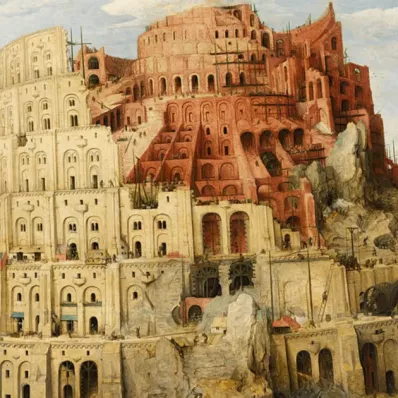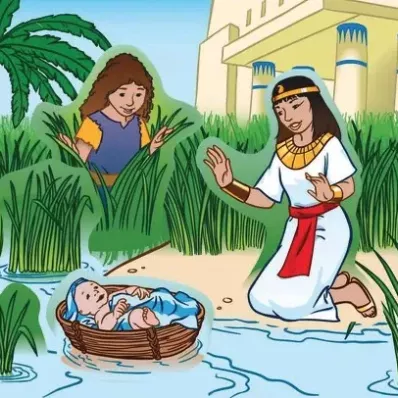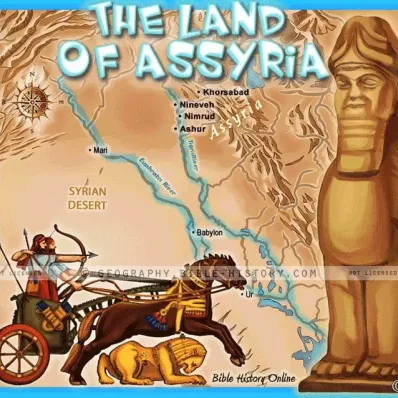Agriculture
Tilling the ground (Gen. 2:15; 4:2, 3, 12) and rearing cattle
were the chief employments in ancient times. The Egyptians
excelled in agriculture. And after the Israelites entered into
the possession of the Promised Land, their circumstances
favoured in the highest degree a remarkable development of this
art. Agriculture became indeed the basis of the Mosaic
commonwealth.
The year in Israel was divided into six agricultural
periods:-
I. SOWING TIME.
Tisri, latter half
(beginning about the autumnal equinox.)
Marchesvan.
Kisleu, former half.
Early rain due = first showers of autumn.
II. UNRIPE TIME.
Kisleu, latter half.
Tebet.
Sebat, former half.
III. COLD SEASON.
Sebat, latter half.
Adar.
[Veadar.]
Nisan, former half.
Latter rain due (Deut. 11:14; Jer. 5:24; Hos. 6:3; Zech. 10:1;
James 5:7; Job 29:23).
IV. HARVEST TIME.
Nisan, latter half.
(Beginning about vernal equinox. Barley green. Passover.)
Ijar.
Sivan, former half., Wheat ripe. Pentecost.
V. SUMMER (total absence of rain)
Sivan, latter half.
Tammuz.
Ab, former half.
VI. SULTRY SEASON
Ab, latter half.
Elul.
Tisri, former half., Ingathering of fruits.
The six months from the middle of Tisri to the middle of Nisan
were occupied with the work of cultivation, and the rest of the
year mainly with the gathering in of the fruits. The extensive
and easily-arranged system of irrigation from the rills and
streams from the mountains made the soil in every part of
Israel richly productive (Ps. 1:3; 65:10; Prov. 21:1; Isa.
30:25; 32:2, 20; Hos. 12:11), and the appliances of careful
cultivation and of manure increased its fertility to such an
extent that in the days of Solomon, when there was an abundant
population, "20,000 measures of wheat year by year" were sent to
Hiram in exchange for timber (1 Kings 5:11), and in large
quantities also wheat was sent to the Tyrians for the
merchandise in which they traded (Ezek. 27:17). The wheat
sometimes produced an hundredfold (Gen. 26:12; Matt. 13:23).
Figs and pomegranates were very plentiful (Num. 13:23), and the
vine and the olive grew luxuriantly and produced abundant fruit
(Deut. 33:24).
Lest the productiveness of the soil should be exhausted, it
was enjoined that the whole land should rest every seventh year,
when all agricultural labour would entirely cease (Lev. 25:1-7;
Deut. 15:1-10).
It was forbidden to sow a field with divers seeds (Deut.
22:9). A passer-by was at liberty to eat any quantity of corn or
grapes, but he was not permitted to carry away any (Deut. 23:24,
25; Matt. 12:1). The poor were permitted to claim the corners of
the fields and the gleanings. A forgotten sheaf in the field was
to be left also for the poor. (See Lev. 19:9, 10; Deut. 24:19.)
Agricultural implements and operations.
The sculptured monuments and painted tombs of Egypt and
Assyria throw much light on this subject, and on the general
operations of agriculture. Ploughs of a simple construction were
known in the time of Moses (Deut. 22:10; compare Job 1:14). They
were very light, and required great attention to keep them in
the ground (Luke 9:62). They were drawn by oxen (Job 1:14), cows
(1 Sam. 6:7), and asses (Isa. 30:24); but an ox and an ass must
not be yoked together in the same plough (Deut. 22:10). Men
sometimes followed the plough with a hoe to break the clods
(Isa. 28:24). The oxen were urged on by a "goad," or long staff
pointed at the end, so that if occasion arose it could be used
as a spear also (Judg. 3:31; 1 Sam. 13:21).
When the soil was prepared, the seed was sown broadcast over
the field (Matt. 13:3-8). The "harrow" mentioned in Job 39:10
was not used to cover the seeds, but to break the clods, being
little more than a thick block of wood. In highly irrigated
spots the seed was trampled in by cattle (Isa. 32:20); but
doubtless there was some kind of harrow also for covering in the
seed scattered in the furrows of the field.
The reaping of the corn was performed either by pulling it up
by the roots, or cutting it with a species of sickle, according
to circumstances. The corn when cut was generally put up in
sheaves (Gen. 37:7; Lev. 23:10-15; Ruth 2:7, 15; Job 24:10; Jer.
9:22; Micah 4:12), which were afterwards gathered to the
threshing-floor or stored in barns (Matt. 6:26).
The process of threshing was performed generally by spreading
the sheaves on the threshing-floor and causing oxen and cattle
to tread repeatedly over them (Deut. 25:4; Isa. 28:28). On
occasions flails or sticks were used for this purpose (Ruth
2:17; Isa. 28:27). There was also a "threshing instrument" (Isa.
41:15; Amos 1:3) which was drawn over the corn. It was called by
the Hebrews a moreg, a threshing roller or sledge (2 Sam. 24:22;
1 Chr. 21:23; Isa. 3:15). It was somewhat like the Roman
tribulum, or threshing instrument.
When the grain was threshed, it was winnowed by being thrown
up against the wind (Jer. 4:11), and afterwards tossed with
wooden scoops (Isa. 30:24). The shovel and the fan for winnowing
are mentioned in Ps. 35:5, Job 21:18, Isa. 17:13. The refuse of
straw and chaff was burned (Isa. 5:24). Freed from impurities,
the grain was then laid up in granaries till used (Deut. 28:8;
Prov. 3:10; Matt. 6:26; 13:30; Luke 12:18).

















